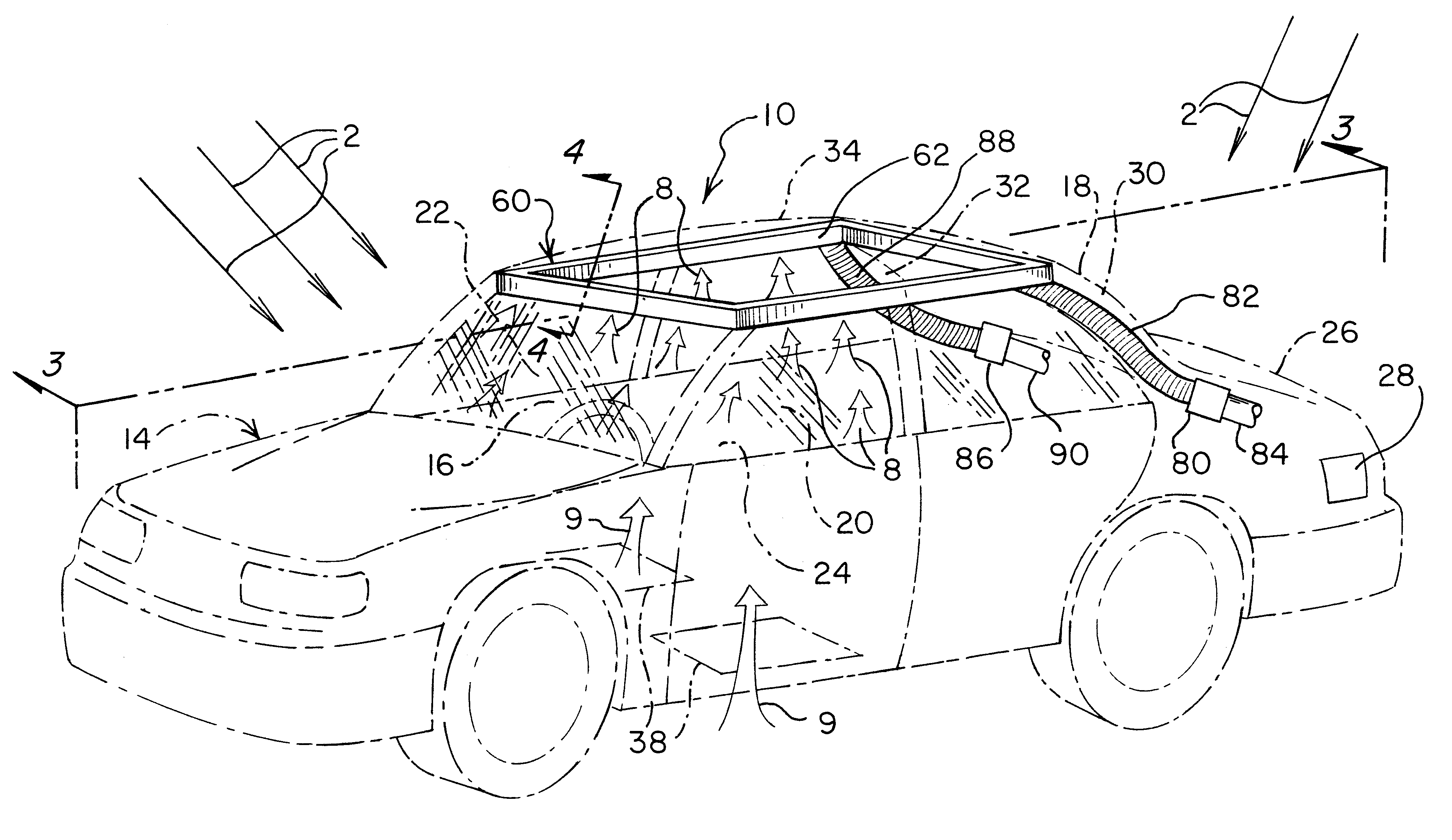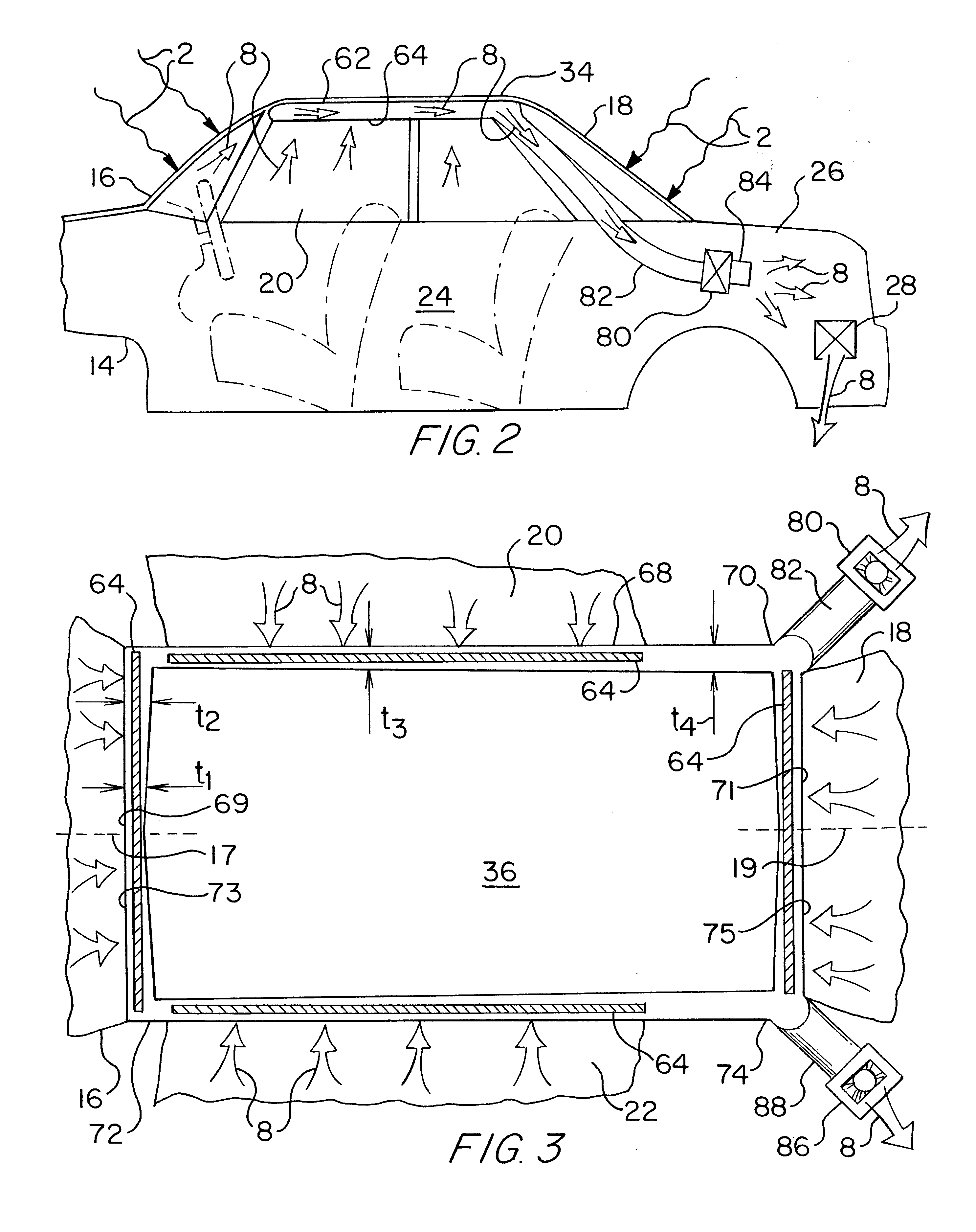Vehicle cabin cooling system for capturing and exhausting heated boundary layer air from inner surfaces of solar heated windows
a technology of solar energy and cooling system, which is applied in the direction of vessel parts, vehicle cleaning, vessel construction, etc., can solve the problems of high peak cooling load that must be met by vehicle air conditioning system, increase the heat build-up, and increase the discomfort of passengers, so as to reduce heat build-up, uniform pressure drop, and the effect of heavy tinting
- Summary
- Abstract
- Description
- Claims
- Application Information
AI Technical Summary
Benefits of technology
Problems solved by technology
Method used
Image
Examples
Embodiment Construction
The cabin cooling system 10 of the present invention shown in FIGS. 1-5 includes boundary layer air capture and exhaust apparatus that selectively draws in air 8 flowing in thin, laminar-flow, boundary layers formed along solar-heated, interior surfaces of windshield 16 and other windows 18, 20, 22 of a vehicle 14. By selectively capturing the laminar flow boundary layers of heated air to the substantial exclusion of other air in the vehicle passenger cabin and discharging or exhausting that heated air 8 outside the passenger cabin, the cabin cooling system 10 effectively exhausts heat in absorbed in the air 8 and also inhibits transfer of heat by gas, i.e., air, conductance farther into the interior cabin of the vehicle 14.
Referring briefly to the windshield 16 cross-section of FIG. 4, some solar radiation 2 that is incident on the windshield 16 is transmitted 3 by the windshield 16 into the interior passenger cabin 24. Some of the incident solar radiation 2 is reflected 6 either b...
PUM
 Login to View More
Login to View More Abstract
Description
Claims
Application Information
 Login to View More
Login to View More - R&D
- Intellectual Property
- Life Sciences
- Materials
- Tech Scout
- Unparalleled Data Quality
- Higher Quality Content
- 60% Fewer Hallucinations
Browse by: Latest US Patents, China's latest patents, Technical Efficacy Thesaurus, Application Domain, Technology Topic, Popular Technical Reports.
© 2025 PatSnap. All rights reserved.Legal|Privacy policy|Modern Slavery Act Transparency Statement|Sitemap|About US| Contact US: help@patsnap.com



